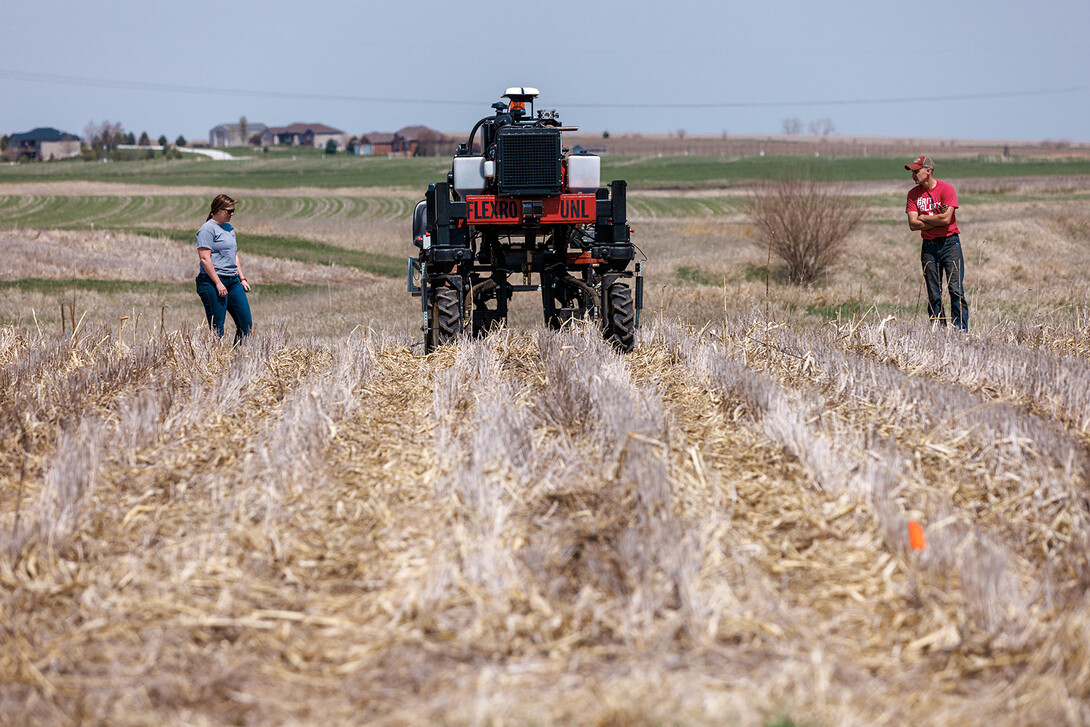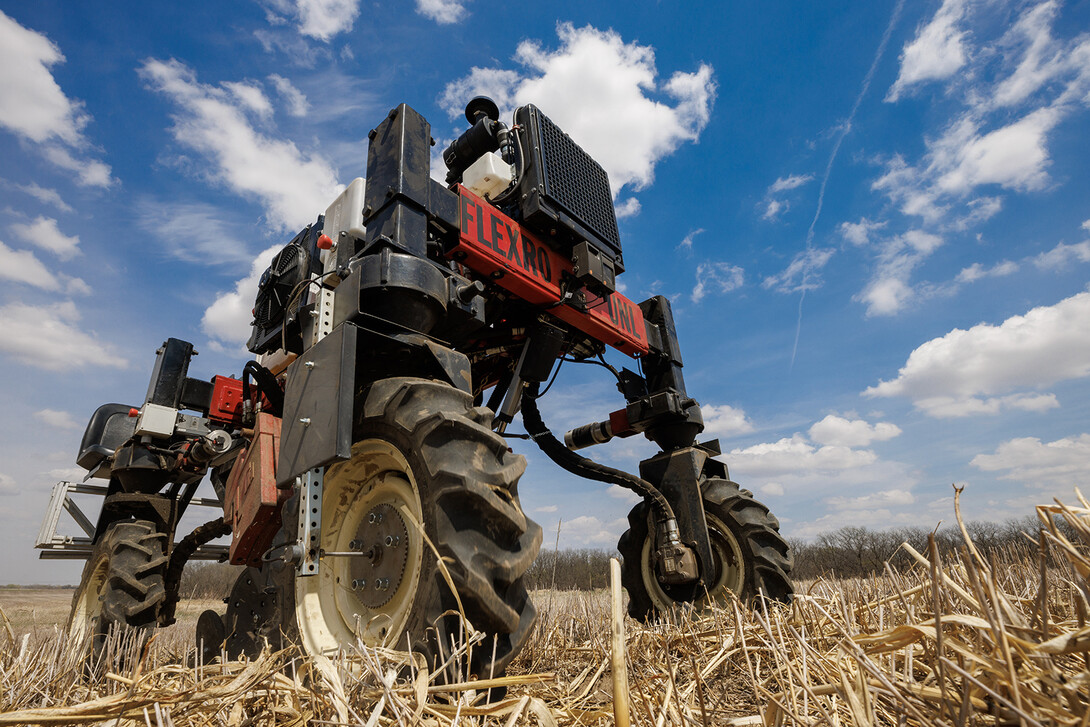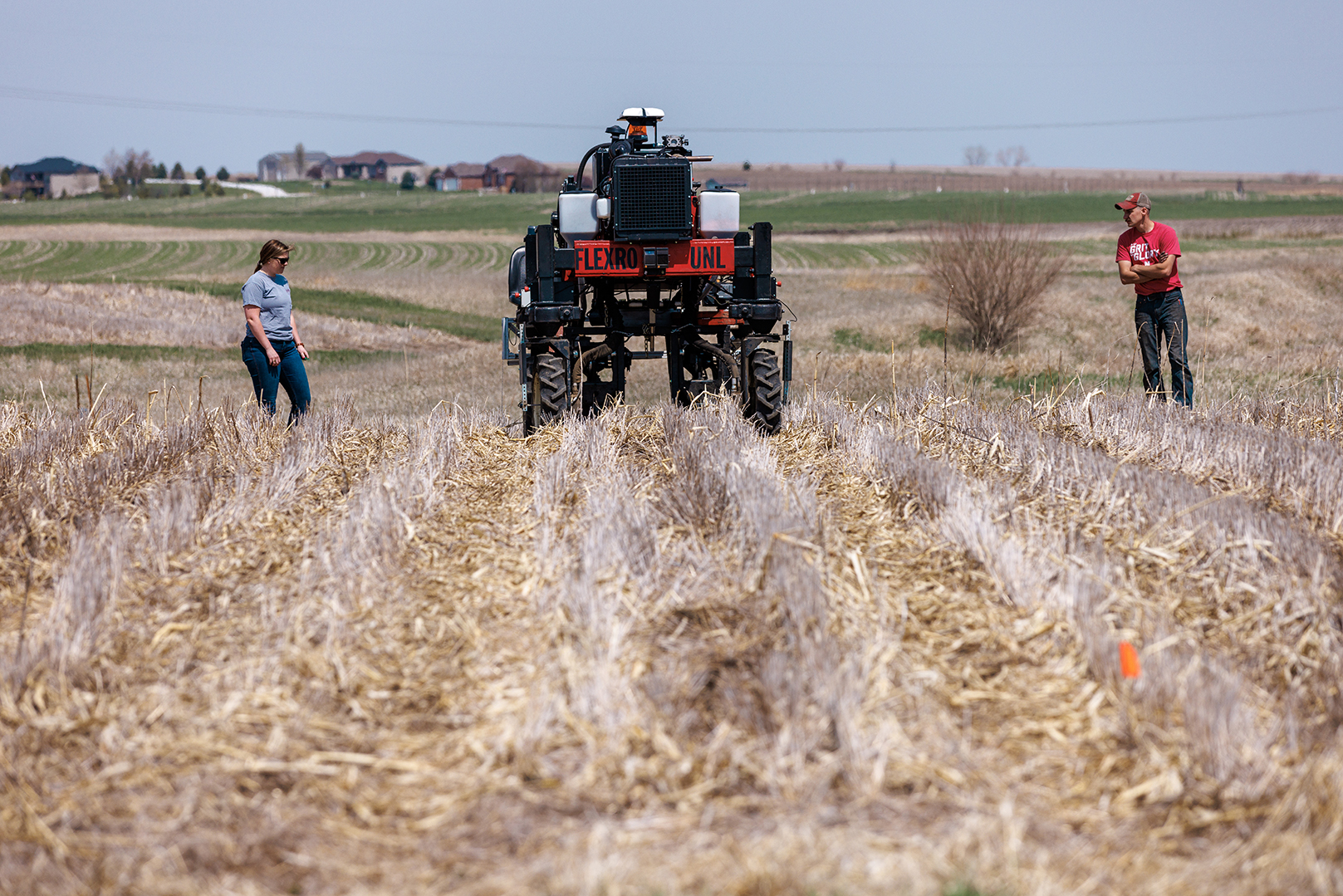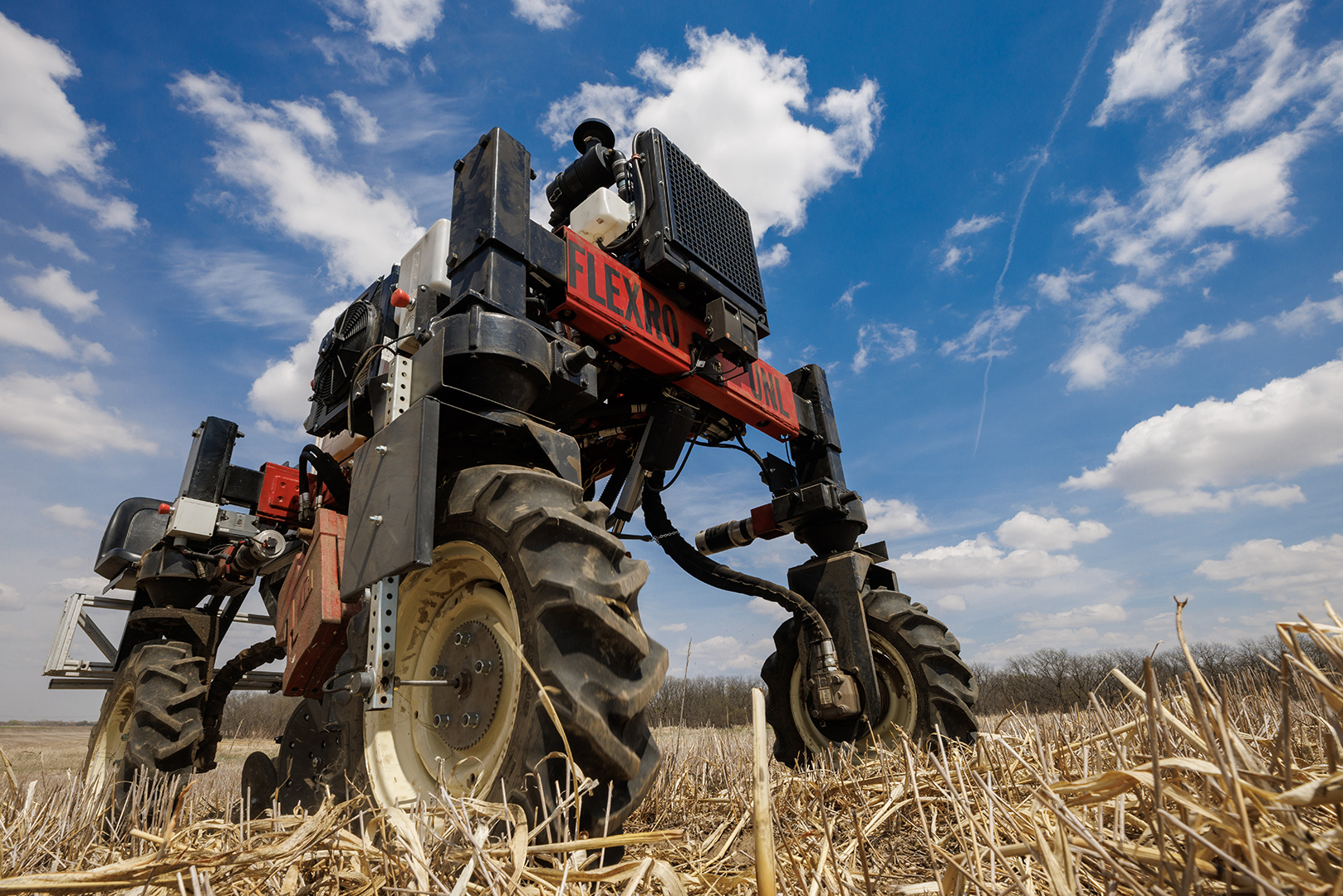
On a calm April morning, Flex-Ro ambled through a corn plot at about 2 miles per hour. While researchers stood by to help clear obstacles from its path, the robot moved and planted on its own.
Seeding the five-acre no-till field on Rogers Memorial Farm marked a significant milestone for the University of Nebraska–Lincoln research project, which aims to use agricultural robots for autonomous planting.
Supported by a $452,783 grant from the U.S. Department of Agriculture’s National Institute of Food and Agriculture, Flex-Ro resides at the forefront of unmanned ground vehicle planter research, said Santosh Pitla, associate professor of advanced machinery systems. With the labor challenges farmers face, he sees robots and autonomy as a critical tool to help maintain agricultural productivity.
“In those lines, I look at this robotic equipment as high-tech farm hands,” he said.
Some agricultural companies are already working to produce and perfect autonomous tractor technology. John Deere and Monarch unveiled autonomous tractors at a 2022 technology conference, and Sabanto has an autonomy system that can be installed in tractors.
Pitla considers Flex-Ro unique from these efforts. In addition to planting seeds autonomously in untilled soil, it can perform other field operations with minimal changes to its hardware and software.
The robot, which first entered fields in 2019 to measure crop traits, can be controlled remotely and operated autonomously. Flex-Ro has been designed to be modular and reconfigurable, with different modes of steering ability available on the fly.
The 3,800-pound machine sits on an adjustable high-clearance platform and is powered by a gas engine. Each wheel contains an electric and hydraulic motor that can be steered in four different modes.
Pitla has managed the project since the robot’s inception in 2015 and continues to work with students to build new capabilities.

Bringing the planter to fields
In the 2022-23 school year, the autonomous planter team included agricultural engineering graduate student Ian Tempelmeyer and agricultural systems technology undergraduates Landon Sokol, Seth Chandler and Zane Rikli.
Tempelmeyer, who has worked on the project since fall 2021, picked up on the progress of previous graduate students and decided to take on the challenge of automated seeding. He spent about six months analyzing the mechanics, finally deciding on a design that would provide enough force to penetrate no-till soil.
“We made a quick realization that a drawn implement in a traditional manner wasn’t going to work. You needed a certain downforce,” he said. “We came up with the idea to put it inside the wheelbase; that’s something I hadn’t seen.”
Once the engineers settled on a design, Tempelmeyer assembled a “build book,” a 30-page document laying out in detail all the parts and how they would fit together. They started assembling in December, then worked on wiring and control systems. He relied heavily on the student workers — especially given their farming backgrounds.
“I’d drop schematics, and they’d start putting it together,” Tempelmeyer said. “We’d work hand in hand, but a lot of times it was them guiding me.”
Making sure the equipment would run safely and smoothly required a lot of trial and error. Eventually, the students refined the code and calibrated the machine enough for more sophisticated controls, such as adjusting the speed and handling terrain changes.
At the field trial in April, it took some minor adjustments to generate enough downforce, but they reached their goal of planting the whole plot with Flex-Ro.
After setting a GPS, the robot can navigate autonomously to plant, and it will stop if it meets an obstacle. It works under the mode of “supervised autonomy,” meaning it still needs an operator to monitor it when planting and requires supervision when moving from one field to another.
Tempelmeyer said it was “awe-inspiring” to be part of a project spanning multiple students’ academic careers. Flex-Ro gained some attention after winning the 2022 Engineering Pitch Competition, hosted by the College of Engineering and NUtech Ventures.
“It’s inspirational for sure, seeing a bunch of students over the past six years with nothing but the tires and building its way up,” he said. “It keeps getting bigger and bigger.”
The planter project is representative of the collaborative work between the agricultural engineering and agricultural systems technology programs offered by the Department of Biological Systems Engineering, Pitla said. Students from both majors at the graduate and undergraduate level played a critical role in the robot’s design, development and testing.
This endeavor exists alongside other Pitla Lab projects on unmanned aerial vehicles and smaller Flex-Ro machines, with plans to combine them using controller area network technology. Commonly used in cars, the technology provides a way for computers to communicate.
In the coming months, Pitla’s team will test UAV and UGV collaboration algorithms, whereby UAVs will follow Flex-Ro to dock and transfer materials such as seeds. Their goal is to autonomously plant the full 300 acres of Rogers Memorial Farm within the next five years by using Flex-Ro robots and drones for planting, refilling the planters, spraying and applying fertilizer.
Share
News Release Contact(s)
Related Links
Tags
High Resolution Photos

HIGH RESOLUTION PHOTOS








